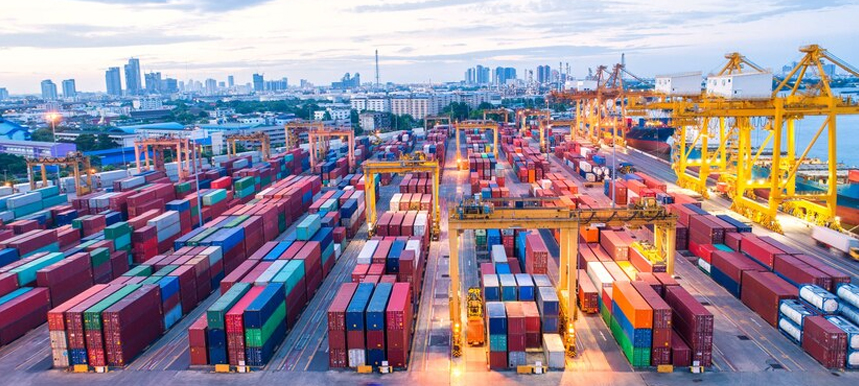In today’s fast-paced business environment, logistics plays a pivotal role in the success of a company. For many organizations, partnering with a third-party logistics provider (3PL) is essential for optimizing their supply chain and ensuring customer satisfaction. As your business evolves, you might find yourself questioning whether it’s time to change your 3PL provider. Understanding the signs of this necessity can be key to maintaining your operational efficiency and overall success in the marketplace. This comprehensive article will guide you through the important indicators that suggest it’s time to take action.
Table of Contents
What is 3PL?

Before delving into why you may want to change your 3PL provider, it’s essential to understand What is 3PL? Third-party logistics (3PL) refers to the outsourcing of logistics services, including transportation, warehousing, inventory management, and order fulfillment. Specifically, 3PL logistics in Canada caters to the unique needs of Canadian businesses. When organizations align with a 3PL provider, they gain access to expertise, infrastructure, and technology, enabling them to operate more effectively.
3PL companies can offer various services depending on the needs of your business, and the right provider can make all the difference. However, if you start experiencing inefficiencies or service disruptions, it might be time to move to another 3PL provider.
Key Indicators to Change Your 3PL Provider
- Poor Communication
Effective communication is critical in logistics. If your current provider is unresponsive, lacks transparency, or fails to provide updates, it can lead to significant operational issues. If communication breaks down, this is a compelling reason to change your logistics provider. - Rising Costs
Increased shipping and operational costs can significantly affect your bottom line. If your 3PL provider raises fees without delivering additional value or improvements in service, it could be time to reconsider your partnership and change your 3PL provider. A thorough analysis of your logistics expenses may reveal potential savings with another provider. - Technology Gaps
In an era of technological advancement, it’s beneficial to partner with a 3PL provider that leverages the latest tools and technologies. If your current provider is outdated and cannot provide automation, tracking, or advanced data analytics, you may want to change your 3PL provider to one that is more tech-savvy. - Inflexibility
Flexibility is vital in logistics, particularly in response to unpredictable market demands or seasonal fluctuations. If your current provider cannot adapt to your changing requirements, it may be a sign that you need to switch your 3PL provider. - Service Level Issues
Consistent delays, inaccurate order fulfillment, and poor inventory management can directly impact your customer experience and sales. If such issues persist, you might want to change your 3PL provider that can meet your standards.
Benefits of Using a 3PL
The right 3PL provider can offer numerous advantages, helping businesses focus on their core competencies while streamlining operations. If you’re not experiencing these benefits, it might be time to change your 3PL provider. Here are several benefits:
- Cost Savings
Working with a 3PL can often lead to reduced shipping costs, especially if they have established relationships with carriers and can negotiate better rates on behalf of their clients. - Access to Expertise
3PL providers have expertise in logistics and supply chain management, allowing you to benefit from their insights and best practices. - Scalability
Using a 3PL allows you to scale your logistics operations quickly as your business grows without the need for significant investments in infrastructure. - Technology
Many 3PLs utilize advanced technology such as transportation management systems (TMS) and warehouse management systems (WMS) to optimize logistics processes.
Benefits of Working with Canadian 3PL Companies
For businesses operating in Canada, partnering with Canadian 3PL companies offers specific advantages. These providers understand regional nuances, regulatory compliance, and the unique challenges of logistics in Canada, thus ensuring efficient operations. If your current partner isn’t meeting these needs, it might be time to change your 3PL provider. Additionally, they can offer services like 3PL warehouse services in Canada that cater to local businesses effectively.
Top 5 Industries Using 3PL Services

Understanding which industries typically leverage 3PL services can shed light on the versatility and applicability of these providers. The most common sectors include:
- E-commerce
With the rise of online shopping, e-commerce businesses depend heavily on efficient logistics to meet customer expectations for rapid delivery. - Manufacturing
Manufacturers use 3PLs to manage the complexity of supply chains and maintain raw material inventories. - Pharmaceuticals
The pharmaceutical industry requires strict compliance with regulations, which many 3PLs are well-equipped to handle. - Retail
Retailers utilize 3PL services to manage their warehousing and distribution efficiently, especially during peak seasons. - Food and Beverage
This sector relies on 3PLs for temperature-controlled warehousing and distribution, ensuring compliance with health standards.
Choosing the Right 3PL Provider
When considering the decision to change your 3PL provider, a systematic approach is essential. Here’s what you should evaluate:
- Reputation
Conduct thorough research into potential providers’ reputations. Review online feedback, check industry rankings, and seek testimonials from other businesses. - Range of Services
Ensure the 3PL offers a comprehensive portfolio of services that align with your business model. This includes whether they provide transloading in Canada, inventory management, or international shipping solutions. - Scalability
As your business grows, ensure your 3PL provider can adapt to increased demands, whether it’s additional warehousing space or expanded delivery capabilities. - Data Utilization
In logistics, effective demand forecasting in 3PL logistics is crucial. A provider that employs data analytics can significantly improve inventory management and reduce costs.
Real-World Case Study
Consider Company Y, a mid-sized e-commerce enterprise that decided to move to another 3PL provider after facing recurring issues with fulfillment delays. As a result of their switch, they achieved a 30% reduction in shipping costs and improved their average delivery time from 5 days to just 2 days. Customer satisfaction ratings increased from 75% to over 90% within one quarter, highlighting the transformative impact of selecting the right provider.
Metric | Before Switching | After Switching |
Shipping Costs | $120,000/year | $84,000/year |
Average Delivery Time | 5 days | 2 days |
Customer Satisfaction Score | 75% | 90% |
Additional Considerations

In addition to the factors mentioned above, here are a few more considerations when deciding whether to change your 3PL provider:
- Innovation
A forward-thinking 3PL will continually adopt new technologies and strategies to stay competitive. If your provider seems stagnant, it could be a sign to look elsewhere. - Personal Touch
A strong partnership should feel collaborative. If your provider doesn’t seem invested in your success, it may be time to consider a change. - Service Level Agreements (SLAs)
Review the SLAs established with your 3PL provider. If they are frequently unmet, you may want to reassess their fit for your business. - Geographic Coverage
As your business grows, you may need to expand operations geographically. Make sure your 3PL can support this growth and offer the necessary infrastructure.
Conclusion
Determining the right time to change your 3PL provider can significantly impact your business’s efficiency and bottom line. By monitoring key performance indicators and being attentive to specific signs of issues, you can evaluate your existing logistics partner effectively. Engaging with the right 3PL provider can lead to streamlined operations, higher customer satisfaction, and ultimately, increased profitability.





